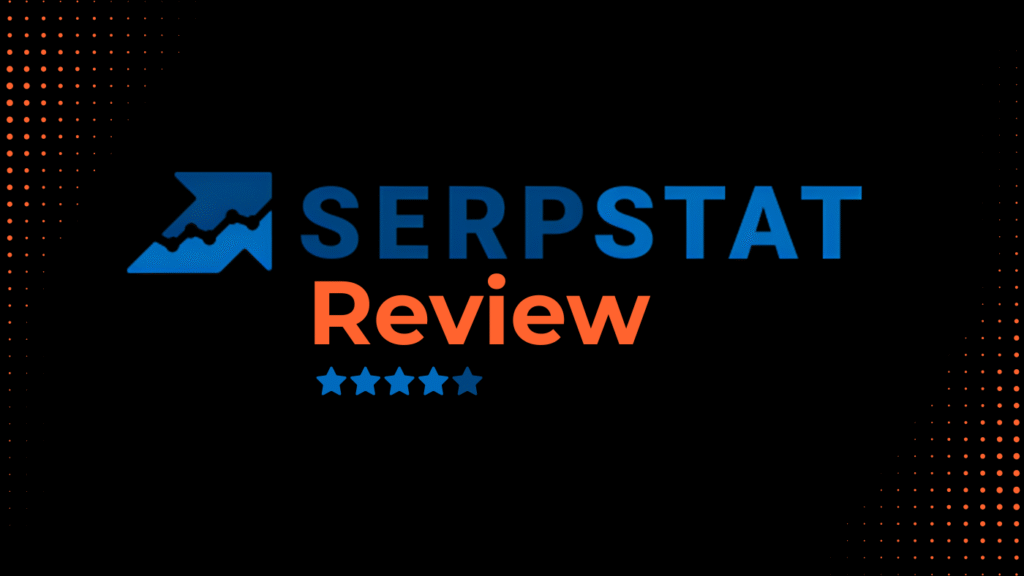
If you’re an SEO or small-agency owner tired of paying enterprise prices, this Serpstat review will show you what it really delivers.
Serpstat has quietly evolved from a niche keyword research app into a serious all-in-one SEO platform trusted by freelancers, agencies, and marketing teams.
Serpstat was founded in 2013 by Ukrainian digital marketing agency Netpeak, and since then, it has grown into one of the most versatile tools not just for SEO but also PPC.
In this Serpstat review 2025, we provide an in-depth, data-driven examination of its features, pricing, pros, cons, and real-world performance for the entire SEO strategy, encompassing both SEO and PPC campaigns.
During 2025, Serpstat introduced smarter keyword clustering, faster dashboards, and improved rank tracking accuracy.
These updates make it a credible and budget-friendly option for anyone who needs comprehensive SEO coverage without the need for enterprise pricing.
But before we dive into modules and metrics, here’s the shorter version.
Quick Verdict:
If you need a value-for-money SEO platform that strikes a balance between functionality and affordability, Serpstat is worth considering.
It’s not the biggest backlink index, but it’s intuitive, practical, and ideal for agencies and SMBs seeking measurable organic search visibility improvements.
What Is Serpstat and What Is It Used For?
Serpstat is a multi-module SaaS SEO software built to consolidate keyword research, technical audits, and competitor tracking inside a single digital marketing suite.
As a complete SEO tool, its five core pillars are:
- Keyword Research Tool: Analyze keyword difficulty, keyword difficulty score, search volume accuracy, related keywords, and emerging keyword trends.
- Rank Tracking Software: Monitor SERP features, daily rankings, and SERP visibility reports.
- Site Audit Tool: Detect crawl errors, perform technical SEO audits, and generate site health reports.
- Backlink Analysis Tool: Explore referring domains, anchors, and link-building data through its backlink checker.
- Competitor Analysis Tool: Run domain overviews and keyword gap analyses to uncover opportunities.
Compared to other suites like Ahrefs and Semrush, Ahrefs dominates link data, while Semrush offers deeper content marketing insights, and Serpstat excels in affordability and usability.
For those comparing to Serpstat vs Semrush or Serpstat vs Ahrefs in 2025, the main trade-off is depth versus price.
What’s New in Serpstat 2025
2025 brought notable improvements:
- Redesigned UI and UX for smoother navigation.
- Enhanced data freshness and update frequency across keyword and ranking modules.
- Higher rank-tracking accuracy and cleaner SERP-visibility layouts.
- Smarter keyword-clustering logic for topical grouping.
- Deeper Core Web Vitals analysis inside the site-audit module.
- Transparent credit-usage displays showing limits by module.
- Expanded API integration with more precise credit tracking.
If you’re evaluating the current version, expect better stability, crisper charts, and faster dashboards.
Serpstat Features Explained (Complete Module Breakdown)
SerpStat Organic Keyword Research & Keyword Clustering
Serpstat’s keyword explorer remains the heart of the platform, making it a powerful tool for keyword research.
It allows you to analyze keyword database size, gauge difficulty, and validate search volume accuracy before drafting content to determine whether a keyword is worth targeting.
Moreover, you can build a list of keywords & spot the most profitable keywords to target based on competition and intent with this robust keyword research tool.
The built-in clustering engine, known as the Serpstat Group, organizes semantically related terms into logical clusters – essential for modern, topic-based SEO.
For agencies, Serpstat Group automation replaces manual spreadsheets and accelerates on-page optimization, helping to streamline large-scale content strategies.
Use cases:
- Build content briefs and keyword maps.
- Identify SERP-feature opportunities.
- Prioritize topics by trend and volume.
Once you’ve chosen your keyword targets, the next step is tracking how they perform – that’s where Serpstat’s Rank Tracker helps.
SerpStat Rank Tracker & SERP Visibility
The rank-tracking module monitors keywords across multiple engines, countries, and devices, making it one of the standout features of Serpstat. The tool allows users to track performance trends, identify fluctuations in ranking, and analyze visibility over time.
Features include:
- Daily tracking with high accuracy.
- SERP-feature monitoring for snippets, FAQs, and maps.
- Visibility reports showing share-of-voice trends.
- Local filters for regional SEO.
It doubles as a lightweight analytics layer – ideal for client reports and campaign summaries.
Rankings tell part of the story, but authority comes from links. Let’s see how Serpstat handles backlink data.
SerpStat Backlink Analysis & Link Index
The backlink analysis module of Serpstat provides a quick look at your backlink profile, showing referring domains, new/lost links, anchor text, and anchor distribution.
Metrics include index size, toxicity indicators, and domain trust scores.
While Ahrefs holds a larger link index, Serpstat includes enough data for comprehensive audits, especially when paired with its exportable link-building data.
Marketers comparing Serpstat vs Moz Pro or Serpstat vs SpyFu will notice that Serpstat covers multiple disciplines at once instead of a single niche.
To make those insights actionable, you need a healthy site – cue the Technical Audit.
SertpStat Site Audit Tool & Technical SEO
The audit engine performs over 150 checks, including crawl errors, HTTPS issues, duplicate content, and Core Web Vitals, to identify key technical SEO issues.
It produces a clear site-health report with severity scores and step-by-step fixes to help you improve your SEO effectively..
Inside the dashboard, a unified metrics view summarizes website performance and provides a historical overview of improvements.
Serpstat shows detailed insights into site errors, structure, and page speed metrics, making it easier to prioritize fixes.
Serpstat’s technical SEO audit now includes accessibility checks and visualization widgets, enabling both marketers and developers to easily interpret results.
SerpStat Competitor Analysis & Domain Analysis
The domain-analysis section helps benchmark each competitor’s performance.
- Domain overview lists visibility, keywords, and traffic estimates.
- Competitor-analysis tools reveal overlapping keywords and gaps.
- Keyword-gap analysis compares up to four domains simultaneously.
This is the foundation for campaign planning – showing which URLs win, what to target next, and which backlinks to chase.
It transforms a solid SEO tool like Serpstat into a genuine marketing intelligence platform and a comparison tool for analyzing competitors and improving overall search engine visibility.
PPC Analysis & Marketing Intelligence
Serpstat’s PPC module connects organic and paid data.
You can uncover ad keywords, CPCs, and competitor ad copies.
For SEOs collaborating with ad teams, this cross-channel visibility is powerful.
If you’re comparing Serpstat vs Ubersuggest vs Similarweb, Note: Ubersuggest is simpler; Similarweb provides enterprise-level data.
Serpstat strikes a middle balance – actionable PPC insights without leaving your SEO environment.
API, Reports & White-Label Tools
Agencies benefit most from Serpstat’s API and white-label features.
- REST API supports dashboards and automations.
- Reports can be scheduled or fully branded.
- A transparent credit system clearly tracks API usage.
Combined, these features make Serpstat a practical enterprise SEO solution for agencies that need automated client deliverables without high costs.
Serpstat gives teams the flexibility to manage multiple projects, generate white-label reports, and streamline workflows all within a single, affordable platform.
Ease of Use, Dashboard & Performance
Serpstat’s dashboard in 2025 feels polished and predictable.
Navigation is logical, modules are consistent, and data loads faster.
The visualization layer transforms audits, rankings, and backlinks into intuitive charts, enabling seamless management of every aspect of an SEO campaign.
What’s Different
- Clean interface with consistent icons.
- Easy transitions between modules.
- One dashboard for all SEO metrics.
- Fast learning curve.
What it Lags
- Large crawls can slow the interface slightly.
- Occasional delay when loading historic SERP data.
Overall, Serpstat, as a popular seo tool, delivers an intuitive experience even for first-time users – a clear improvement over older versions.
Serpstat Pricing Plan 2025 – Plans, Free Trial & Value Analysis
| Plan | Monthly (approx.) | Core Limits | Ideal User |
|---|---|---|---|
| Lite | $69 | 4,000 searches/day | Solo users |
| Standard | $149 | 5 projects | Small teams |
| Advanced | $299 | 25 projects + API | Agencies |
| Enterprise | Custom | Unlimited users | Enterprises |
Pricing varies by region, with favorable rates for USA.
Each plan’s credit usage is visible directly on the dashboard.
A free trial is available to test features, and occasional coupon codes or discounts appear seasonally.
Some users report significant savings through annual or lifetime deals.
Value takeaway:
Considering Serpstat, its mix of functionality and price makes it a strong SEO tool worth investing in.
Serpstat allows agencies to scale tracking, audits, and reporting efficiently, making it one of the best SEO platforms for teams that need reliable, mid-tier performance without compromising on quality.
Serpstat vs Competitors (2025 Comparison)
| Tool | Strength | Weakness | Verdict |
|---|---|---|---|
| Semrush | Massive suite | Expensive | Enterprise powerhouse |
| Ahrefs | Link depth | No clustering | Best for backlink pros |
| SE Ranking | Friendly UI | Limited DB | Great for SMBs |
| Ubersuggest | Low cost | Less accurate | Ideal for beginners |
| SpyFu | PPC focus | Small audit depth | Great PPC intel |
| Mangools | Ease of use | Fewer modules | Good starter |
| Moz Pro | Trusted brand | Slower UI | Reliable classic |
| Similarweb | Market analytics | High cost | Enterprise-only |
| Serpstat | Balanced coverage | Smaller link index | Best mid-range value |
Serpstat provides roughly 80% of the power of Ahrefs or Semrush at about half the cost—an appealing trade-off for budget-conscious agencies.
Who Should Use Serpstat in 2025?
Serpstat suits:
- Agencies: looking for API automation, team seats, and white-label reports.
- Freelancers: who need affordable keyword and backlink analysis.
- Indian SEOs: Leveraging Local SEO Pricing.
- Global teams: exploring European or Asian databases for multilingual campaigns.
Features in Serpstat ideal for anyone seeking an affordable way to manage on-page SEO, organic search visibility, and overall SEO performance, including technical health – from a single, unified, and intuitive dashboard.
Serpstat Pros and Cons
Pros:
- Outstanding balance of features and cost.
- Strong keyword-clustering automation.
- Clean UI and steady data freshness.
- Smooth reporting and white-label exports.
- Customer service support.
Cons:
- Backlink index smaller than Ahrefs’.
- Credit caps can confuse new users.
- Deep audits take longer on big sites.
User feedback on tool review platforms Averages 4.5/5, praising its value, clarity, and ongoing updates.
How Accurate Is Serpstat’s Data?
Testing across multiple markets shows:
- Keyword accuracy on par with SE Ranking and close to Semrush.
- Rank-tracking variance within 1–2 positions.
- Backlink-index refresh rates improved year over year.
For most campaigns, Serpstat delivers data precise enough for planning and reporting, with minor fluctuations expected on ultra-fresh keywords.
Serpstat Support, Reliability & Customer Experience
Serpstat Customer support is efficient and user-focused.
Response times average under a day, and both chat and ticket systems are now more transparent.
Tutorials, video guides, and the Serpstat Academy are designed to expand users’ SEO knowledge, helping beginners and professionals understand how to use the platform effectively.
The dedicated Serpstat team ensures every query is handled promptly and professionally.
Lite-plan subscribers receive the same service as enterprise users, and canceling a subscription is also straightforward: export data, click “Billing,” and confirm.
Feedback on the quality of support remains consistently positive.
Is Serpstat Worth It in 2025?
In Short: Yes. Serpstat is an excellent choice for teams that require an affordable SEO tool offering reliable data, scalable reporting, and powerful SEO functionality, all without the enterprise-level price tag.
This great review highlights why Serpstat continues to stand out among all-in-one SEO platforms in 2025
Why it’s worth buying:
- Excellent technical audits and keyword research.
- Efficient rank tracking and visibility reports.
- Strong ROI for agencies managing multiple sites.
If you’re testing the waters, start with the free trial.
When ready, choose Serpstat and buy the plan that fits your scale – Lite for individuals, Advanced for agencies.
Final Thoughts on Serpstat
Serpstat’s 2025 version is a mature and reliable suite that delivers most of what professionals need from an all-in-one seo tool at a fraction of the price of its competitors.
Strengths Recap:
- Intuitive dashboards and modules.
- Comprehensive keyword-clustering engine.
- Affordable pricing tiers.
- Strong audits and rank tracking.
Limitations:
- Smaller backlink index than Ahrefs.
- Slight data lag in rare markets.
Bottom Line
For agencies, SMBs, and marketers needing a unified view of their SEO performance, Serpstat remains a smart & economical choice.
It’s a genuine value-for-money SEO platform that continues to improve every year.
FAQs
Q.1 What is Serpstat used for?
Serpstat is an all-in-one SEO platform that covers everything related to SEO, including keyword research, rank tracking, backlink auditing, and competitor analysis, for better organic search visibility.
Q.2 How accurate is Serpstat’s keyword data?
Accuracy is high for most regions and competitive terms. Cross-check niche keywords using Search Console for confirmation.
Q.3 How much does Serpstat cost per month?
Plans start at around $69 per month, with discounts available for annual billing and larger teams.
Q.4 Which is better: Serpstat or Semrush?
Semrush offers broader data depth, while Serpstat also offers similar features at a significantly lower cost – ideal for smaller teams and agencies managing major SEO projects on a budget.
Q.5. Is Serpstat good for beginners?
Absolutely. The simple dashboard, helpful tutorials, and easy workflows make it perfect for newcomers.
Q.6 Does Serpstat offer a free plan?
No, SerpStat does not offer a permanently free plan but it has 7 Day Free Trial for new users.






